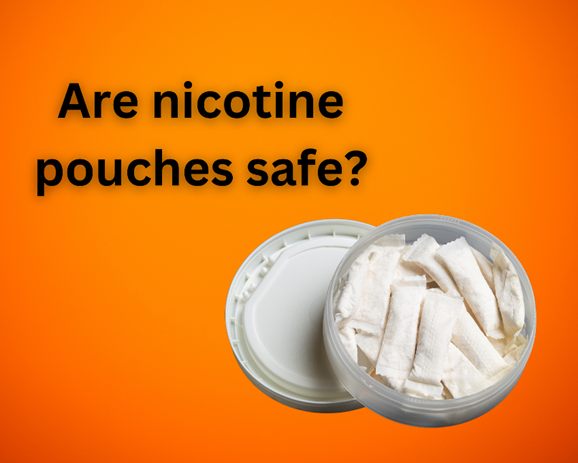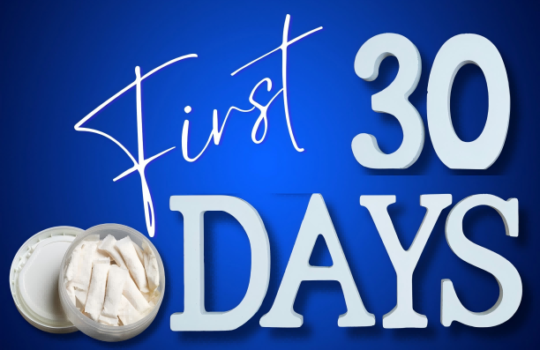Curious about nicotine pouches? As a popular and convenient alternative to traditional tobacco products, they’re quickly gaining traction around the globe. But with this growing popularity comes a complex web of regulations that vary from country to country. This comprehensive guide aims to cut through the confusion, providing you with clear, concise information on the legalities surrounding nicotine pouches.
Whether you’re a seasoned user or simply exploring your options, understanding these regulations is key to enjoying your nicotine experience safely and responsibly. So, let’s dive into the world of nicotine pouch laws, ensuring you’re well-informed and empowered to make the best choices for your lifestyle.
Age Restrictions: Ensuring Responsible Use
First things first, let’s talk age. Nicotine pouches, while a popular alternative, are not intended for everyone. Most countries have established a minimum age requirement for purchasing and using these products, typically either 18 or 21. This is due to the addictive nature of nicotine and the importance of protecting young people from its potential harm.
Think of it this way: you wouldn’t hand a car key to a teenager who hasn’t learned to drive, right? The same principle applies to nicotine pouches.
Here’s a quick overview of age restrictions in some key regions:
- United States: The minimum age for purchasing nicotine products, including pouches, is 21 under federal law.
- European Union: Most EU countries set the minimum age at 18, although some individual countries may have stricter regulations.
- Asia: Age restrictions vary widely across Asian countries, with some setting the minimum age at 18 and others at 20 or even 21.
- Oceania: Australia and New Zealand have strict regulations, with the minimum age for purchasing nicotine pouches typically set at 18.
It’s important to note that these are just general guidelines. Local laws and regulations may vary, so always check the specific requirements in your country or region before purchasing or using nicotine pouches.
If you’re planning to travel with your nicotine pouches, it’s crucial to research the age restrictions in your destination country. What might be perfectly legal in one place could be prohibited in another. By being aware of the rules, you can avoid any unexpected legal issues and enjoy your travels worry-free.
Packaging and Labeling: More Than Meets the Eye
Don’t just see the packaging of your nicotine pouches as a simple outer shell. It’s a crucial component, carefully regulated to ensure both your safety and the responsible use of these products. Regulations often dictate specific requirements for how nicotine pouches are presented, and understanding these details can empower you as a consumer.
Here’s what to look for:
- Clear Warnings: Prominent health warnings are mandatory on nicotine pouch packaging. These aren’t meant to alarm you, but to provide transparent information about the potential risks of nicotine use, enabling you to make informed decisions.
- Child-Resistant Packaging: Safety is a top priority, especially when it comes to children. Nicotine pouch packaging is designed to be difficult for young children to open, reducing the risk of accidental ingestion.
- Tamper-Evident Seals: These seals provide peace of mind that your product hasn’t been opened or tampered with since leaving the manufacturer.
- Standardized Packaging (In some regions): In areas like the European Union, standardized packaging regulations aim to reduce the product’s appeal to youth and minimize misleading marketing.
But regulations go beyond these general requirements. Let’s delve deeper into specific regions:
- United States (FDA): The FDA mandates clear labeling with accurate product information, ingredient lists, and nicotine content. Health warnings must be prominently displayed, and packaging must be child-resistant.
- European Union (TPD): The TPD requires standardized packaging with large, graphic health warnings covering a significant portion of the package. Additionally, detailed information about ingredients and nicotine levels must be included.
- Asia: Regulations vary by country, but generally, clear labeling of ingredients, nicotine content, and health warnings are mandatory. Some countries have adopted plain packaging rules to discourage youth use.
- Oceania (Australia/New Zealand): Packaging regulations are stringent, requiring plain packaging with graphic health warnings. Nicotine pouch packaging must also be child-resistant and tamper-evident.
Remember, packaging isn’t just about aesthetics; it’s a legal requirement designed to protect consumers and ensure responsible use. So, next time you reach for your nicotine pouches, take a moment to appreciate the thought and regulation that goes into that little pouch!
Advertising and Promotion: Separating Fact from Fiction
Nicotine pouches are everywhere these days, and their advertising can be quite enticing. But don’t be fooled by flashy ads or bold claims. The marketing of nicotine products, including pouches, is subject to strict regulations aimed at protecting consumers and preventing youth appeal.
Truthful and accurate marketing messages are the cornerstone of these regulations. Companies cannot make unverified health claims, use imagery or language that targets young people, or promote excessive nicotine consumption. In many regions, advertisements must include prominent health warnings about the potential risks of nicotine use.
Let’s take a closer look at the advertising regulations in specific regions:
- United States (FDA): The FDA prohibits advertising that appeals to minors and requires all marketing materials to include health warnings.
- European Union (TPD): Advertising restrictions are extensive, including bans on cross-border advertising and limitations on the use of certain flavors and promotional elements.
- Asia: Many Asian countries have strict advertising regulations for nicotine products, often prohibiting advertising in certain media channels or requiring health warnings to be displayed prominently.
- Oceania (Australia/New Zealand): Advertising of nicotine pouches is heavily restricted, with limitations on where and how these products can be promoted.
These regulations are designed to ensure that consumers receive accurate information about nicotine pouches and their potential risks. Understand that marketing messages are not always a complete picture. It’s essential to do your own research, compare different brands, and read unbiased reviews to make informed decisions about which products align with your needs and preferences.
Equipped with knowledge of the advertising landscape, you can be a savvy consumer, separating fact from fiction and making choices that prioritize your health and well-being.
Usage in Public Places: A Global Guide to Nicotine Etiquette
Taking your nicotine pouch on the go? That’s great, but remember that the rules for using them in public spaces can vary significantly between different countries. What’s acceptable in one city might be frowned upon in another.
So, before you pop in a pouch while enjoying a coffee or waiting for a train, it’s crucial to understand the local regulations to avoid any faux pas or potential fines.
Here’s a quick glimpse at the public usage landscape:
- United States: Similar to traditional tobacco products, nicotine pouches are often prohibited in indoor public spaces, workplaces, restaurants, and on public transportation. However, there might be designated outdoor areas where use is permitted. Check local and state laws for specifics.
- European Union: The Tobacco Products Directive generally restricts nicotine pouch use in smoke-free zones, which include most indoor public spaces, workplaces, and public transport. However, some countries within the EU may have variations in their laws.
- Scandinavia: Renowned for stringent tobacco control, Scandinavian countries like Sweden, Norway, and Denmark generally prohibit the use of nicotine pouches in indoor public areas, workplaces, and on public transportation.
- Asia: Regulations vary significantly across Asia. While countries like Japan and South Korea have strict bans on nicotine pouch use in most public places, others may have more lenient rules or designated areas for use.
- Oceania: Australia and New Zealand heavily restrict the use of nicotine pouches in public spaces, often treating them similarly to cigarettes and other tobacco products.
To stay on the right side of the law, familiarize yourself with the specific regulations in your location. A quick online search or a glance at signage in public spaces can save you from any unintended violations. And remember, even if it’s permitted, always be mindful of others and use your nicotine pouches discreetly.
Now, we will explore the important topic of health and safety regulations to ensure you are aware of the steps taken to safeguard your well-being as a user of nicotine pouches.
Health and Safety Regulations: Your Well-being, Our Priority

Nicotine pouches are relatively new to the market, but their safety is taken very seriously worldwide. Rigorous regulations ensure these products meet stringent health and safety standards to protect you, the consumer. Here’s how different regions prioritize your well-being:
- United States (FDA): The FDA meticulously regulates nicotine pouches under the Family Smoking Prevention and Tobacco Control Act. This involves extensive testing and approval processes, with nearly one million applications for nicotine products (including non-tobacco nicotine) submitted as of 2022, highlighting the stringent review process. Products must undergo evaluations for addiction potential, harmful substances, and overall health impact before being approved for market. Additionally, manufacturers are required to monitor and report any adverse health effects, ensuring a prompt regulatory response to emerging concerns.
- European Union (TPD): The EU enforces strict safety standards through the Tobacco Products Directive (TPD), including limitations on nicotine content and bans on certain harmful additives. Child-resistant packaging and clear health warnings are also mandatory. All nicotine pouches must undergo rigorous testing to meet these safety standards before they can be sold within the EU. This focus on safety hasn’t hindered the growing European market for nicotine pouches, with current usage at 0.3% of the adult population, a figure projected to triple by 2025.
- Asia: Regulatory approaches vary across Asia, but many countries have stringent measures in place. In Japan, nicotine pouches are subject to detailed safety assessments and approval processes, similar to those for medicinal products, before market entry. South Korea also enforces strict regulations, including close monitoring and reporting requirements for manufacturers, to ensure public health safety. The increasing collaboration between companies in the US and South Korea further emphasizes the strong regulatory focus on maintaining high safety standards.
- Oceania (Australia/New Zealand): Australia regulates nicotine pouches as therapeutic goods, subjecting them to stringent safety and quality standards on par with medicines. This includes detailed safety evaluations, limitations on nicotine content, and mandatory child-resistant packaging. New Zealand mirrors this approach, enforcing rigorous safety standards and requiring manufacturers to conduct extensive testing and report any adverse health effects. These regulatory frameworks in Australia and New Zealand prioritize consumer safety by ensuring that nicotine pouches meet high standards before reaching the market.
- Scandinavia: Scandinavian countries like Sweden, Norway, and Denmark have particularly stringent regulations for nicotine pouches, often aligning them with those for traditional tobacco products. These regulations encompass strict safety standards, including limitations on nicotine content and requirements for child-resistant packaging. Manufacturers must conduct comprehensive safety assessments and report any adverse effects to the relevant authorities. Sweden, in particular, has extensive experience regulating oral nicotine products, setting a high bar for safety and consumer protection.
Understanding these regulations is crucial for making informed decisions about your nicotine pouch use. It allows you to choose products that have undergone thorough testing and meet the highest safety standards, ensuring your well-being remains a top priority.
Future Trends: Crystal Ball Gazing for Nicotine Pouches
The world of nicotine pouch regulations is a bit like a rollercoaster: it’s constantly twisting, turning, and evolving. As research sheds more light on the effects of these products, we can expect a few exciting (and perhaps even a little bumpy) changes ahead.
Here’s a sneak peek at what might be coming down the pipeline:
- Safety First, Always: We’re likely to see even stricter safety standards, as regulatory bodies like the FDA leave no stone unturned in ensuring that nicotine pouches are as safe as possible. Think tighter limits on nicotine levels, more thorough ingredient checks.
- Truth in Advertising: Get ready for even more transparency in advertising. Regulators are on a mission to protect consumers from misleading claims, so expect to see clearer information about risks and stricter guidelines on what companies can and can’t say. Say goodbye to those “too good to be true” ads for good!
- Protecting the Youth: With nicotine pouches becoming increasingly popular among young people, we can anticipate a stronger focus on preventing youth access. This might mean raising the minimum age for purchase, stricter ID checks, and even more educational campaigns about the potential risks of nicotine.
- Public Health in the Spotlight: As research progresses, public health policies will likely adapt. We might see increased funding for smoking cessation programs, innovative harm reduction strategies, and a greater emphasis on educating the public about nicotine use. Think of it as a public health makeover, but with nicotine pouches in the mix.
Keeping an eye on these trends isn’t just about staying ahead of the curve; it’s about making informed choices and understanding how the landscape might change for nicotine pouch users in the future. So, buckle up and get ready for the ride – it’s bound to be an interesting one!
The Nicotine Pouch Journey: Empowered, Informed, and Enjoyable
You’re now well-versed in the intricacies of nicotine pouch regulations – a valuable asset in your journey as a consumer. Armed with this knowledge, you’re empowered to make informed choices that align with your needs and preferences.
Remember, the legal landscape is dynamic, so staying up-to-date with the latest information is key to a safe, responsible, and enjoyable nicotine pouch experience. Embrace the evolving world of nicotine pouches, armed with the knowledge to make the best decisions for your lifestyle. Cheers to a fulfilling and well-informed nicotine journey!
Sources: TobaccoIntelligence, Tobacco Tactics, Regulatory Oversight, FDA







